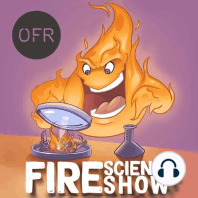59 min listen

011 - Why temperature is so easy to measure but so hard to interpret?
011 - Why temperature is so easy to measure but so hard to interpret?
ratings:
Length:
44 minutes
Released:
Jul 28, 2021
Format:
Podcast episode
Description
What is the single most measured thing in fire science? The answer is easy - temperature. We use it everywhere - from learning material properties in TGA's to expressing conditions in compartment fires. We use it at the same time to define exposure conditions for our structures and the acceptance criteria within them. We even use it in evacuation studies to define the tenability criteria for occupants... We measure temperature. Everywhere and all the time.But is it really the thing we are looking for? Often temperature measurements become a proxy for heat transfer or energy balance problems, which in many cases are the things that we are looking for. In this episode, I'm going to talk about the wonderful world of heat transfer in fires, temperature measurements and its role in Fire Science and Fire Safety Engineering. In the end, I will give you four pieces of advice on how to improve the understanding of what you are measuring, so hopefully, you will stay with me till the end!--- LinkedIn discussion thread --- https://www.linkedin.com/posts/fire-science-show_011-why-temperature-is-so-easy-to-measure-activity-6826039859526856704-Np2T --- Useful links ---Papers mentioned in the episode:J. Torero, A. Law, C. Maluk - Defining the thermal boundary condition for protective structures in fire: https://linkinghub.elsevier.com/retrieve/pii/S0141029616311841E. Rackauskaite - Improved travelling fires methodology (PhD thesis) https://spiral.imperial.ac.uk/handle/10044/1/52917M. Heidari, P. Kotsovinos, G. Rein - Flame extension and the near field (...) https://onlinelibrary.wiley.com/doi/abs/10.1002/fam.2773M. Beshir et al. - Semi-empirical model for estimating the heat release rate required for flashover (...) thermally-thin boundaries (...) - https://www.sciencedirect.com/science/article/abs/pii/S0379711220300862?via%3DihubIncropera's Fundamentals of Heat and Mass Transfer: https://www.wiley.com/en-us/Fundamentals+of+Heat+and+Mass+Transfer%2C+8th+Edition-p-ES81119320425U. Wickstrom - Temperature Calculation in Fire Safety Engineering https://www.springer.com/gp/book/9783319301709J. Toreros lecture 5 at Princeton https://www.youtube.com/watch?v=HdNGV9jYAU0(the whole course: https://www.youtube.com/playlist?list=PLbInEHTmP9VZjxk0XxzflwUwbCTqzcI_w)
Released:
Jul 28, 2021
Format:
Podcast episode
Titles in the series (100)
024 - Who's a Fire Safety Engineer with Jimmy Jönsson by Fire Science Show